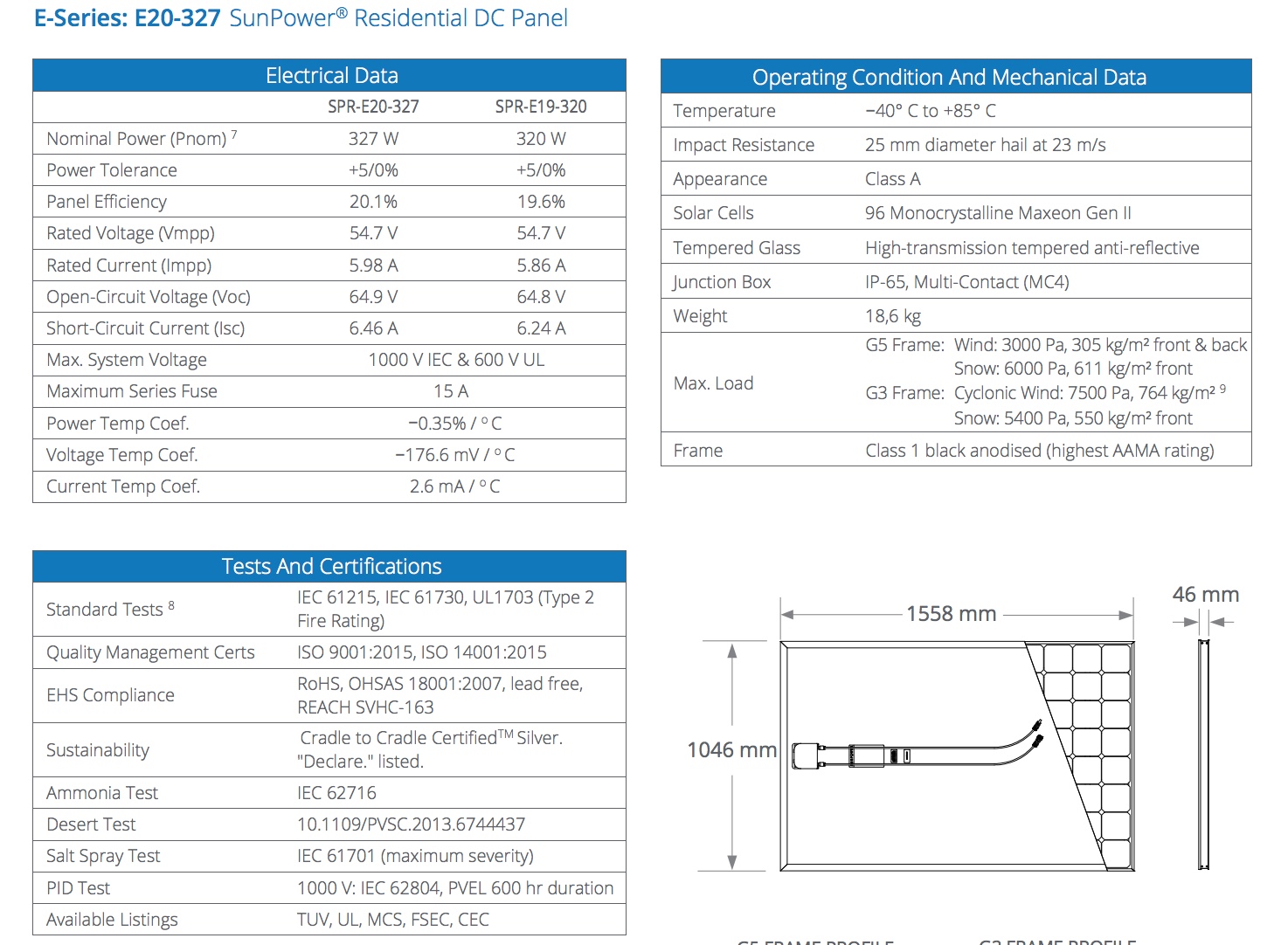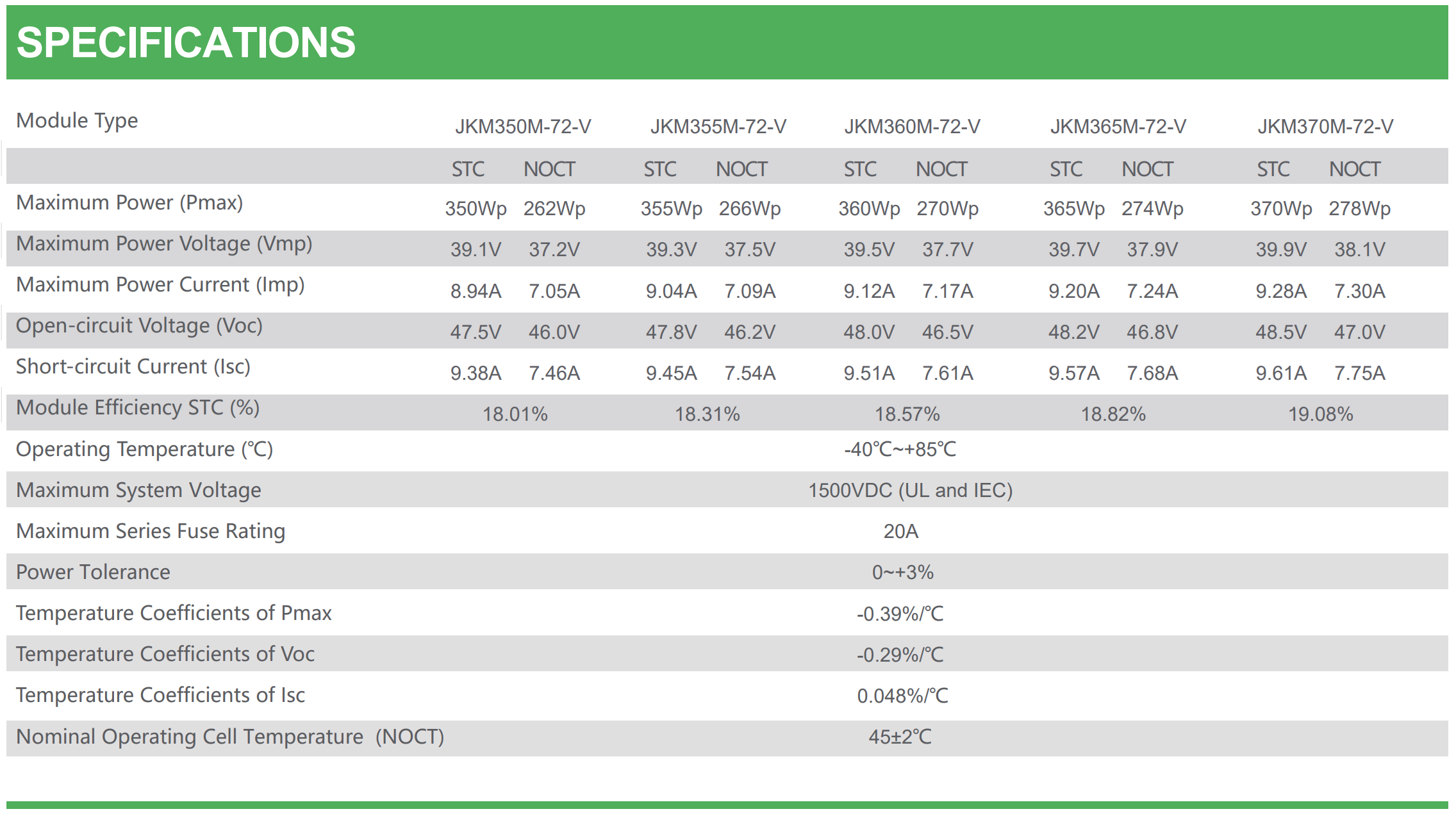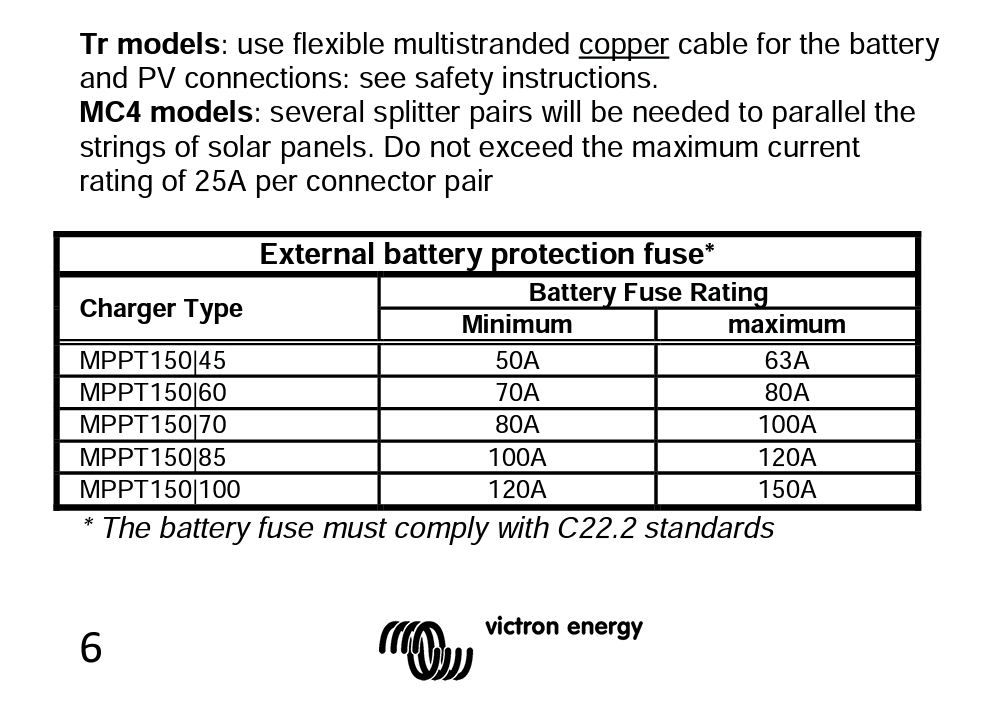Hi everyone. I have 2x Sunpower E-20 327w solar panels that i'm going to install. The output of these panels is shown in the image below:

Now, my question is about wire sizing. I will use 6AWG from the panels to the Victron 100/50 smart solar controller which will be within 3' of the batteries. 6AWG is good for 37amps effective use current, so that should be more than enough for the approx 20' fun from the panels to the controller (i'm open to other suggestions on wire size if you have advice).
My biggest concern is wiring size from the controller to the batteries. The 100/50 MPPT can only accept up to 6AWG (37amp wire). From my research, that can be a problem given the panels statistics. When the MPPT uses the extra voltage to create more charging amps, the amps can spike considerably on the MPPT output side to the batteries. The panels are approx 650w together, divided by 12v = 54.17amps potentially coming out of the 100/50 MPPT to the batteries. I know there are losses here and there, but it will still be way above the max current rating of 37amps for the MPPT's max wire receptacle size of 6AWG.
Feel free to blow my limited knowledge of all this out of the water. Im new to it all but the brain cells are firing on all cylinders, but I could be completely off the rails with it all.
I apologize if this sounds a little long winded or confusing....probably because I am confused! haha.
Looking forward to any and all advice, help. Thanks in advance.
Scrimma




